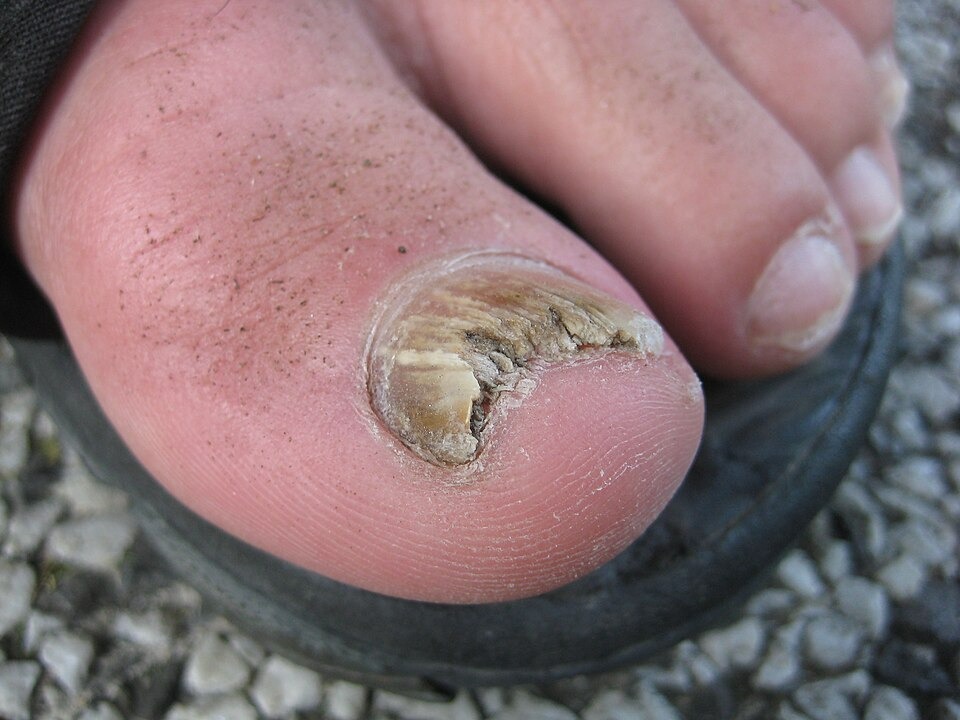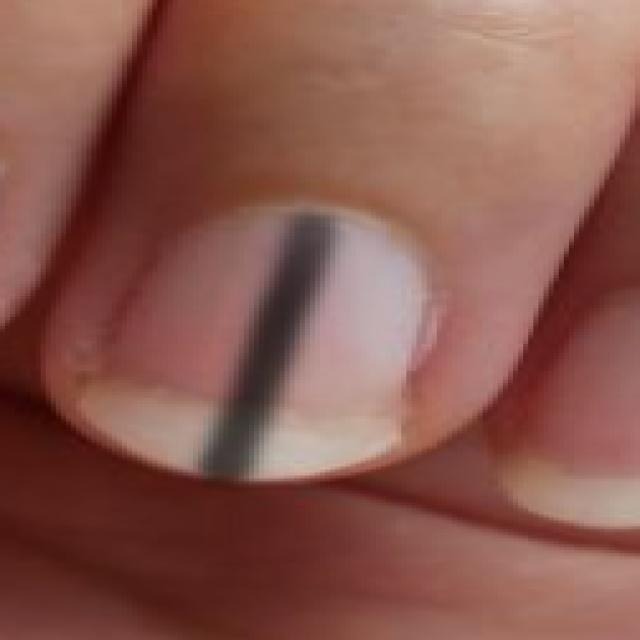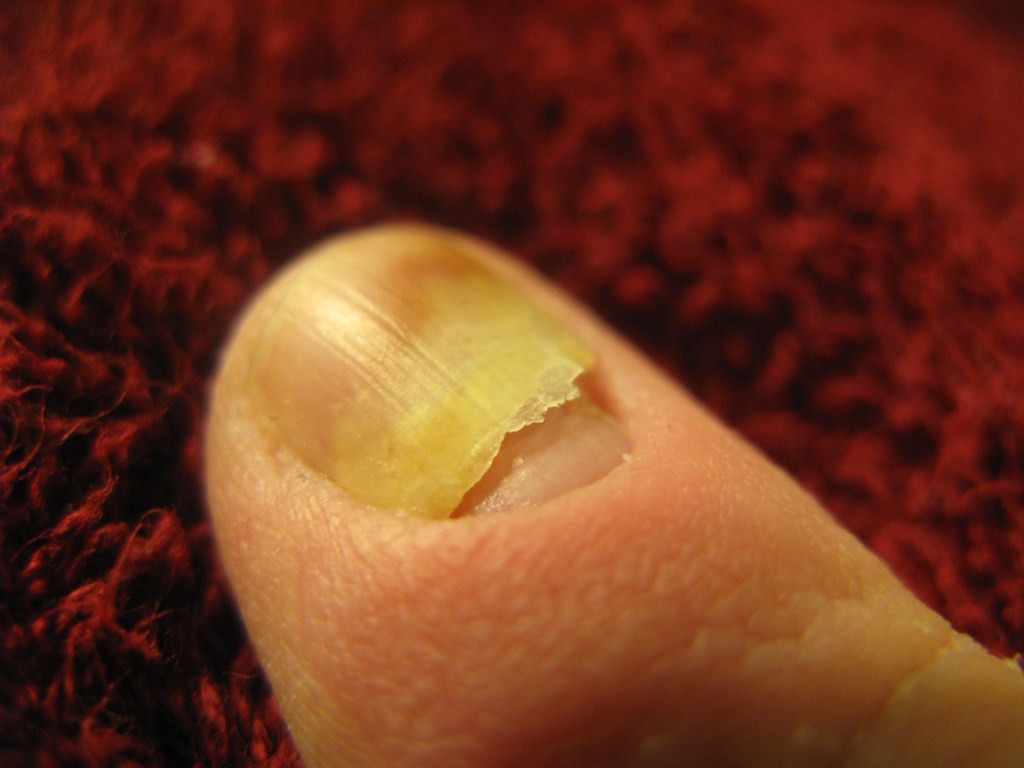Treating common nail disorders
There are a range of different nail conditions that could affect you in both the short-term (acute) and long-term (chronic).
Though most of them are a cosmetic rather than health issue, it’s still important to treat the condition as early as possible. In some cases it’s possible to treat them with home care solutions, but if the condition is more advanced then you may have to seek the help of someone that has access to specialised equipment, such as lasers.
Here are some of the most common nail disorders and how to treat them.
Fungal Nail Infections (onychomycosis)

What is it? A fungal nail infection (clinically known as onychomycosis) is defined by a yellowing or browning of the toenails. In some cases they can also appear cracked or crumbling. It’s normally not serious and doesn’t turn into anything worse. It’s more of a cosmetic concern for people.
What causes it? It can be caused by a number of things, including coming into contact (skin-to-skin) with another person who has a fungal infection, prolonged exposure to warm/moist conditions, walking barefoot in shower/pool areas or wearing trainers for extended periods.
How do you treat it? When it comes to treating a nail fungus infection, you generally have two options:
- oral treatments (creams or tablets)
- laser treatments
Oral treatments such as antifungal nail cream or tablets can take up to 12 months to take effect. There are also a number of potential side effects with antifungal tablets that don't make them suitable for everyone.
On the other hand, laser treatments for nail fungus have been found to be a quicker and more effective solution (used either alone or alongside oral treatments).
Psoriasis

What is it? Psoriasis is a chronic condition that causes itchy, flaky skin. In some cases it can affect the nails too. It normally appears as small dents in your nails (pitting) or orange-yellow discolouration.
What causes it? We don’t completely know what causes psoriasis, but we do know that it’s often genetic and related to a problem with your immune system whereby healthy skin cells are attacked by mistake. Up to 90% of people with psoriatic arthritis are likely to experience nail psoriasis too.
How do you treat it? There’s no cure for psoriasis, but there are ways to make it better. Topical (cream) treatments such as vitamin D analogues or topical corticosteroids are often recommended by medical professionals. Laser treatments have been found to enhance the results of creams and ointments.
Nail Pigmentation (melanonychia)

What is it? Melanonychia refers to a discolouration of the nails. Your nails will generally take on a black or brown colour - often in a single vertical or horizontal strip, but sometimes covering the whole nail.
What causes it? Melanonychia is much more common amongst certain ethnicities: largely those with darker skin. But there are a number of environmental factors that could cause it too, including pregnancy, fungal/bacterial/viral infection, excessive nail biting or pulling, and certain types of drugs or medicines.
How do you treat it? If it has been caused by things like pregnancy or excessive biting, it’s likely to go away after pregnancy or after you stop inflicting trauma on the nail. There are some oral treatments that may help to fight infection. Research suggests that laser treatments are effective when used alongside other treatments.
Nail Separation (onycholysis)

What is it? Onycholysis is when the nail separates from the bed and a new one starts growing underneath. This may lead to some discomfort or discolouration.
What causes it? Oncholysis can be caused by a reaction to certain nail polishes or medication. Conditions such as psoriasis and fungal nail infections can also lead to it. In some cases it can also be caused by wearing tight shoes or an injury to the nail.
How do you treat it? Because the nail has been separated from the skin beneath it, you’ll have to wait until a new one grows in its place. This could take up to 12 months in the most severe cases.
Although you can’t ‘treat’ onycholysis as such, you can take steps to improve its condition. There are some creams which can reduce discomfort and prevent secondary infections. And if it has been caused by a fungal nail infection or psoriasis, you may have to treat that root cause with a combination of laser and oral treatments.
How I Treat Nail Disorders at Dundrum Clinic
There are many other nail diseases and conditions that can look like fungal infections but actually aren’t. Sometimes other diseases coexist with fungi, and sometimes they simply mimic them without any fungal presence.
In my practice, I frequently see patients who come in believing they have a fungal infection, when in fact it is something else entirely. During my consultations I use a special camera to carefully examine the nail and identify the issue.
Once I’ve identified the issue, I create a personalised treatment plan that may combine oral and laser treatments to achieve the best results possible. Although oral treatments alone can sometimes get rid of the problem, most of the time a combination of oral and laser treatments will be more effective.
At Dundrum Clinic we use the nd:Yag and Lunula lasers to treat these nail conditions. Both lasers are FDA-approved and hold CE certification, which means they meet the standards for operation within the European Union (including Ireland).
Whilst the Yag Laser delivers controlled heat to remove nail fungus directly, the cold Lunula Laser stimulates the immune system to fight the infection off naturally. I’ve found that both can be equally effective in fighting nail fungal infections.
If you think you may have a nail infection, feel free to book a consultation with me. It only costs €30, and it’s fully refundable if you choose to get a treatment with us.
